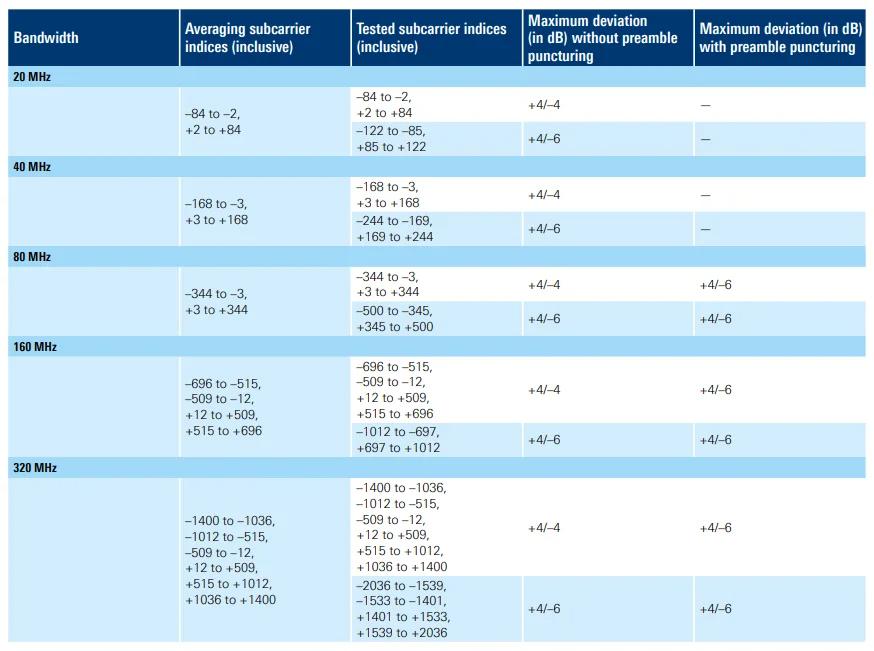Spectral Flatness Measurement in Wi-Fi 7 (IEEE 802.11be)
Advertisement
In Wi-Fi 7, defined by the IEEE 802.11be standard, spectral flatness is an important parameter that ensures the uniformity of signal power distribution across the channel bandwidth. This is crucial for maintaining signal integrity, especially in the high data rate transmissions that Wi-Fi 7 supports.
Spectral flatness refers to the requirement that the power across the entire bandwidth of the transmitted signal remains relatively uniform. This characteristic is vital for minimizing distortion and maintaining the integrity of modulated data, particularly with the advanced modulation schemes used in Wi-Fi 7, such as 4096-QAM.
Key Points of Spectral Flatness in Wi-Fi 7
-
Uniform Power Distribution: Spectral flatness ensures that the power levels across the frequency bins or subcarriers within a channel are within a specified range relative to each other. This uniformity is necessary for accurate data demodulation and decoding at the receiver.
-
Flatness Criteria: For Wi-Fi 7, the standard specifies that the power levels of the subcarriers within the occupied bandwidth should not deviate significantly from the average power level. This is often measured in decibels (dB).
-
Deviation Limits: Typically, spectral flatness is defined by an acceptable range of deviation, such as follows:
- Subcarriers must stay within +/- 2 dB relative to the average power level of the subcarriers within the occupied bandwidth.
- A few subcarriers (often a small percentage) may be allowed to deviate further, up to +/- 4 dB, but these are strictly limited.
-
Frequency Ranges: The flatness requirement applies across the entire channel bandwidth, which can be 20 MHz, 40 MHz, 80 MHz, 160 MHz, or 320 MHz in Wi-Fi 7. Maintaining flatness over wider bandwidths like 160 MHz and 320 MHz is more challenging but necessary for optimal performance.
-
Importance of Flatness:
- Consistency in Modulation: High spectral flatness ensures that all subcarriers carry data at consistent power levels, which is essential for higher modulation schemes like 4096-QAM that are sensitive to power variations.
- Improved Performance: A flat spectrum minimizes the potential for bit errors, improves overall signal quality, and enhances data throughput.
- Reduced Signal Distortion: By maintaining spectral flatness, signal distortion due to uneven amplification across the channel is minimized, leading to a clearer signal at the receiver.
-
Testing and Compliance: Devices are tested to ensure compliance with spectral flatness specifications. This involves transmitting test signals and measuring the power across the subcarriers using specialized equipment. The measurements must fall within the acceptable deviation limits set by the standard.

Image Courtesy: Rohde & Schwarz
The figure depicts spectral flatness for 160 MHz bandwidth for an EHT non-punctured frame.

The table shows the maximum deviation (dB) allowed with and without preamble puncturing for different bandwidths such as 20 MHz, 40 MHz, 80 MHz, 160 MHz, and 320 MHz.
These flatness specifications ensure that the transmitted signal maintains a consistent power profile across its entire bandwidth, which is essential for achieving the high data rates and low error rates that Wi-Fi 7 promises.
Advertisement
 RF
RF
